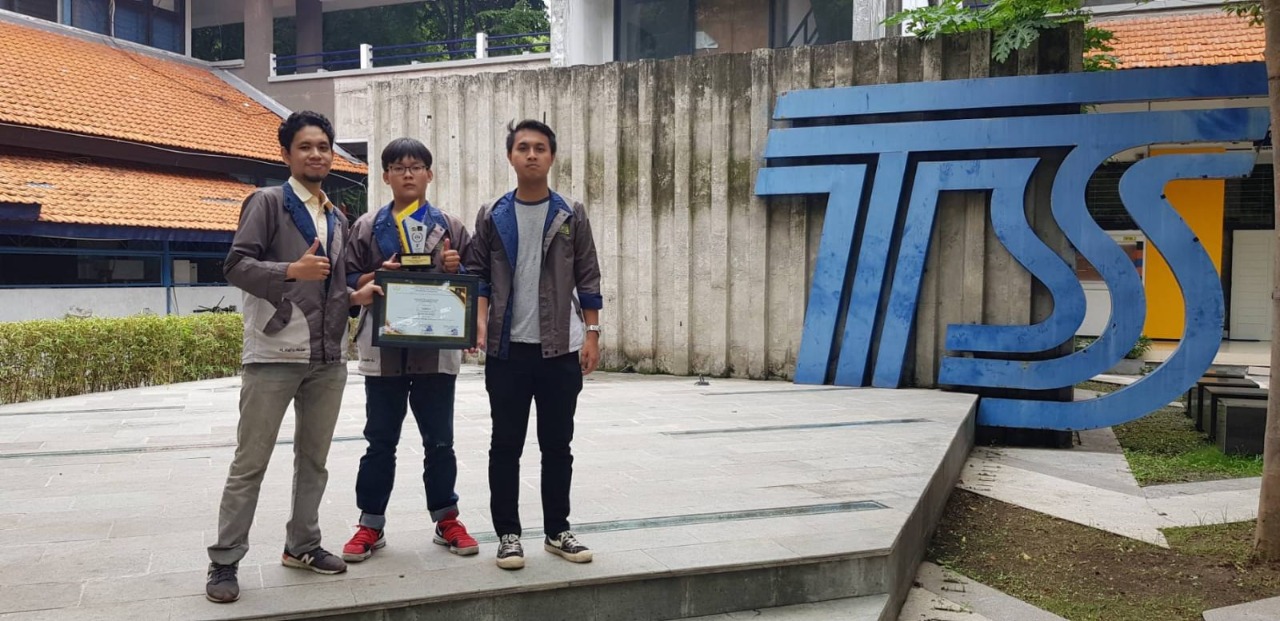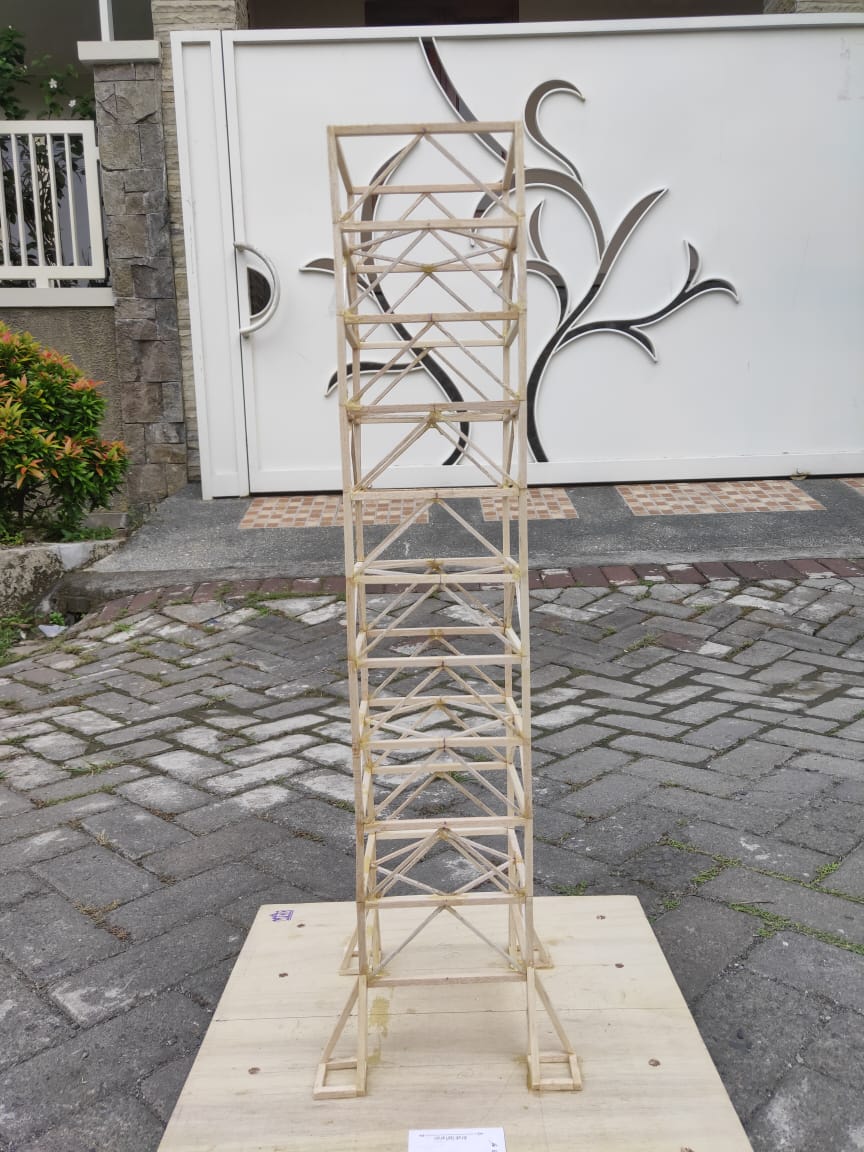ITS Student Team Innovates Sturdy Wooden Buildings Withstand Earthquakes

The ITS Acintya Team consisting of (from left) Al Hafiz Akbar, Alexander Alvin Gunawan, and M Luqman Figo from the ITS Civil Engineering Department
ITS Campus, ITS News – As a region surrounded by the Pacific Ring of Fire, Indonesia has a geographical area that is prone to earthquakes. This requires engineers to make buildings that are robust against earthquakes. Based on this, the Acintya Team, which consists of three students from Insittut Teknologi Sepuluh Nopember (ITS), was encouraged to innovate in modeling earthquake-resistant buildings in Indonesia.
ITS Acintya Team Leader Alexander Alvin Gunawan explained that there were a lot of losses caused by earthquakes in Indonesia. Since 2018, tens of thousands of public facilities, houses, and even human lives have been lost due to the impact of the earthquake in Indonesia itself. Therefore, Alexander and his team members, namely M Luqman Figo and Al Hafiz Akbar designed an earthquake-resistant building with ductility as the main structure.
Ductility is simply the ability of a building structure to stretch under its maximum load before collapsing. Deeper, Alexander explained, the higher the ductility of the structure, the better the building will absorb earthquake energy.
With this planning too, continued Alexander, the building would take longer to fully collapse due to the earthquake. This gives time for occupants of the building to get out into the open. “To achieve high ductility, we use wood as a building material,” said Alexander.

Display of the wooden building prototype of the ITS Acintya Team which has an inverted V bracing structure so that it can withstand earthquakes
This Civil Engineering Department student said, wood was used because it was easy to obtain and had ductility compared to concrete. In addition, wood is also a light material, so the total weight of the structure will also be lighter. “With that, the earthquake force received by the structure becomes smaller,” he added.
According to Alexander, to build a strong building, it is necessary to have a simple, symmetrical and compact structure. In addition, the distribution of mass, stiffness, and strength is sought uniformly and continuously. By following this, the Acintya Team designed the building using a bracing structure in the form of an inverted V or inverted V.
Bracing is a stiffener or binder in a structure that can support it to withstand structural loads. Furthermore, the inverted V-shaped bracing was chosen because it is a simple structure, but can withstand loads well. It has been proven that the inverted V bracing has the best resistance to loads of the various existing forms of bracing.
Through this innovation, the Acintya Team won third place at the WCC 2022 WCC 2022 national Earthquake Resistant Design Competition organized by Warmadewa University Civil Engineering, last November. It was noted that in the competition, the 11-storey building created by the Acintya Team managed to withstand a load of 1.2 kilograms every two floors during the building load test. (ITS Public Relations)
Reporter: Gandhi Kesuma
ITS Student Team Innovates Sturdy Wooden Buildings Withstand Earthquakes
Related News
-
Anticipating Lost Pet Dogs, ITS Students Invent a Tracking Bag
ITS Campus, ITS News —Losing a pet is a sad thing for its owners. To anticipate this, a team
December 31, 2022 01:12 -
ITS Students Integrate Smart City Service Features Through Visionaries
ITS Campus, ITS News — Institut Teknologi Sepuluh Nopember (ITS) continues to prove itself as a home for talented
December 31, 2022 01:12 -
ITS Students Innovate Eco-Quake Building Concept
ITS Campus, ITS News — Along with the development of technology, the construction sector has also experienced rapid growth
December 31, 2022 01:12 -
Great, ITS Successfully Becomes Overall Champion of the 2024 Indonesian Ship Contest
ITS Campus, ITS News — Proving itself as a home for champions, Institut Teknologi Sepuluh Nopember (ITS) managed to
December 31, 2022 01:12
